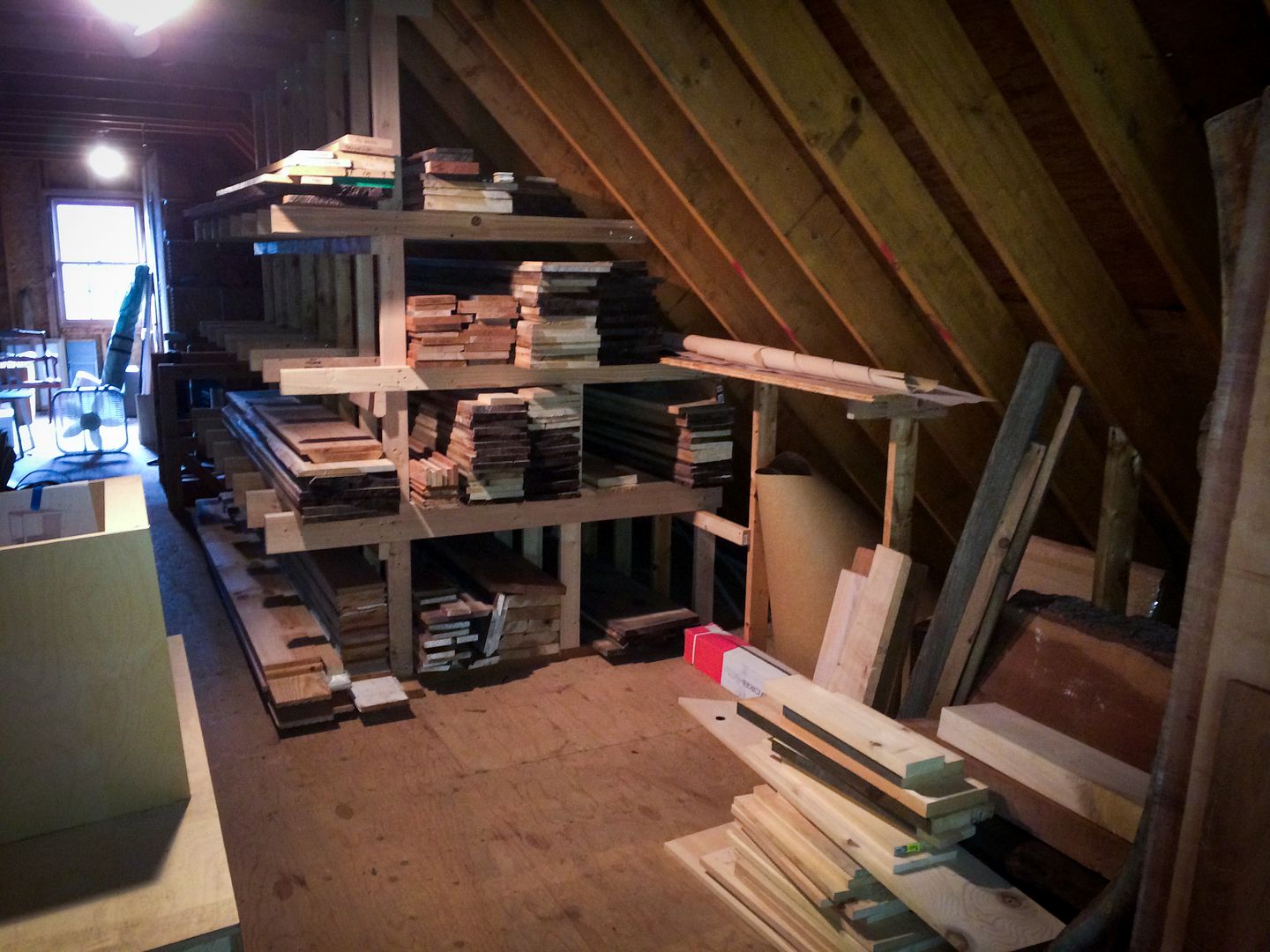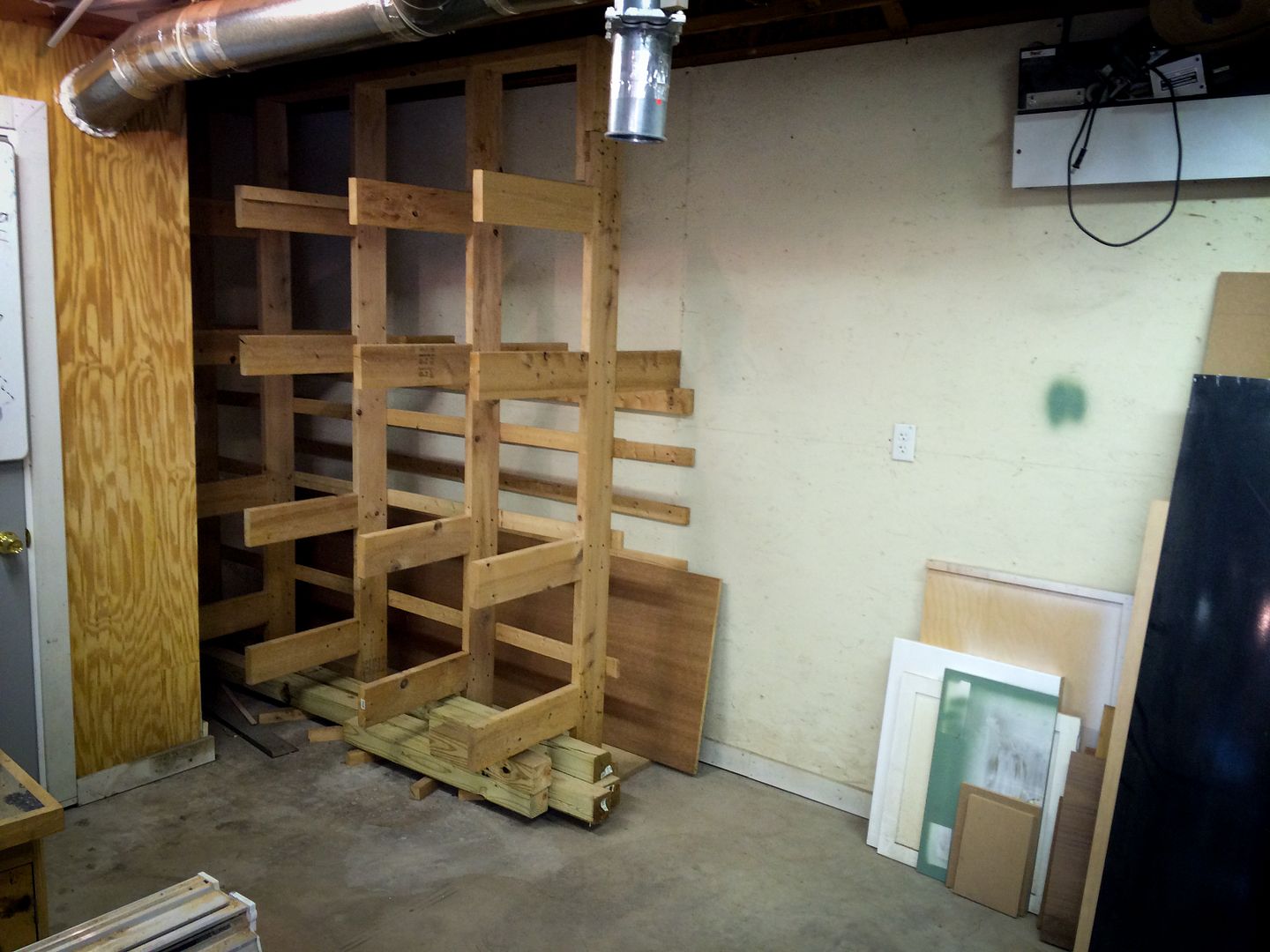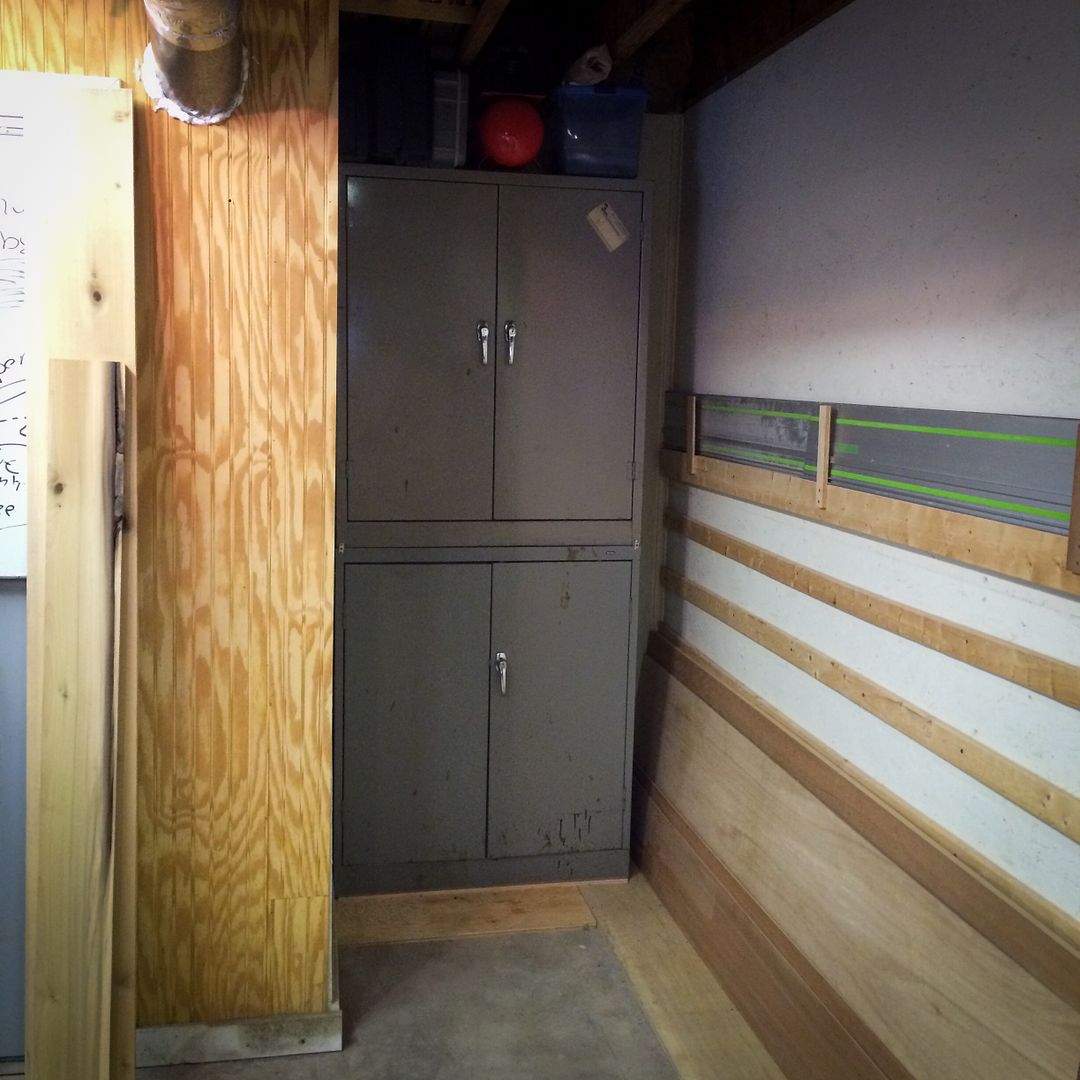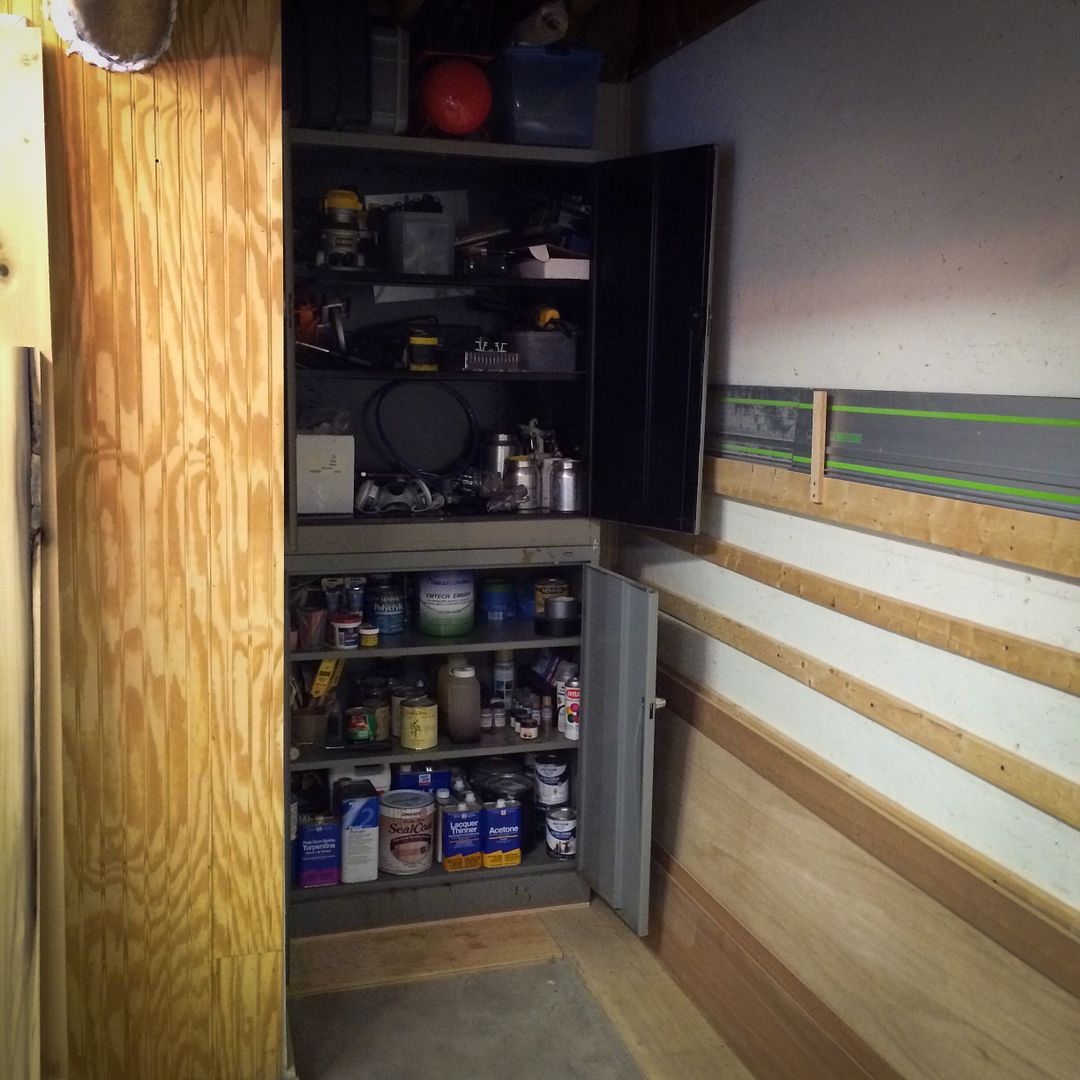My shop has been pretty functional for a long time now with the way it's been arranged, but with my increasing use of sheet goods in the past couple of years due to tack trunk commissions, I've been suffering a little with work flow challenges. Over the past six months, I thought about it quite a bit and in the last few weeks I finally "did something about it". My main tool hub consists of a MinMax S315WS sliding table saw (2007) and a MiniMax FS350 J/P combo (2003) that face each other in the shop in kind of a "galley" arrangement. Their parallel positions have been perfect for material handling "in those directions". Where I've had a challenge is when I have the big outrigger on the slider for handling full sheets of plywood...the material was literally overhanging the J/P when I need to shave off the end of the sheet and just moving my own body around the machine while it was loaded meant sometimes crawling under it. Not a very comfortable thing for a now 57 year old occasional sawdust maker!
The solution became apparent when I realized that like so many table saw owners (regardless of type), that big table that stretches off to the right of the blade for "ripping support" is more inclined to be either just empty space or quite often an "inadvertent storage are for stuff". I honestly never do any ripping of anything wider than a few inches with the fence so for me, that truly was wasted shop space. So reducing the size of that table was the primary answer; the secondary part of that was "by how much"? I didn't want to physically cut down the fence rail and compromise the saw's actual capacity. I might get lucky and win the lottery, making a much larger shop possible. Or someday, my heirs might need to sell the tool and having the original configuration could be important for value. Based on some measuring, etc, I determined that I could gain 16" of additional "shop width" without cutting the fence rail by reducing the right-side aux table to 20" wide. Since that table is heavy steel, I had to make a new one as a replacement and chose to use available materials in my shop cut-off storage. Yea, I'm sometimes cheap.
After removing the steel table, I used it to make direct measurements for the new table and subsequent to this step (not shown in the photo), I installed an aluminum angle to provide further strength and support along the fence side of the table. That aluminum spans the same distance as the original steel table.
The end result was exactly what I needed...this photo was taken prior to moving the saw
Since you don't just push on a 1500 lb tool to make it more, it was necessary for me to rent a pallet jack (which was the same exact one I rented when I first bought the saw...LOL) The $27 for four hours was worth every penny...and about $1.50 an inch for the movement.I'll also mention that I was glad a friend of mine was available to help. While the pallet jack easily lifted the machine, my shop floor is sloped and this was, in effect, an uphill move. It took both of us to get that done...I could not have moved it by myself.
The final position relative to the wall (and stairwell angled wall) is as shown here
Just in general, I'm pleased with this change...it looks good and the space feels bigger for sure...16 tiny inches, but it's a notable difference
But this is the real kicker...check out the available clearance now between the saw and the J/P. Not huge, but...exactly what I needed. It also means I can keep the big outrigger on most of the time, which helps with accuracy. It's also heavy to lift on and off...
That's the saw modification and move. The next post will give some photos of other space improvements (still in progress)




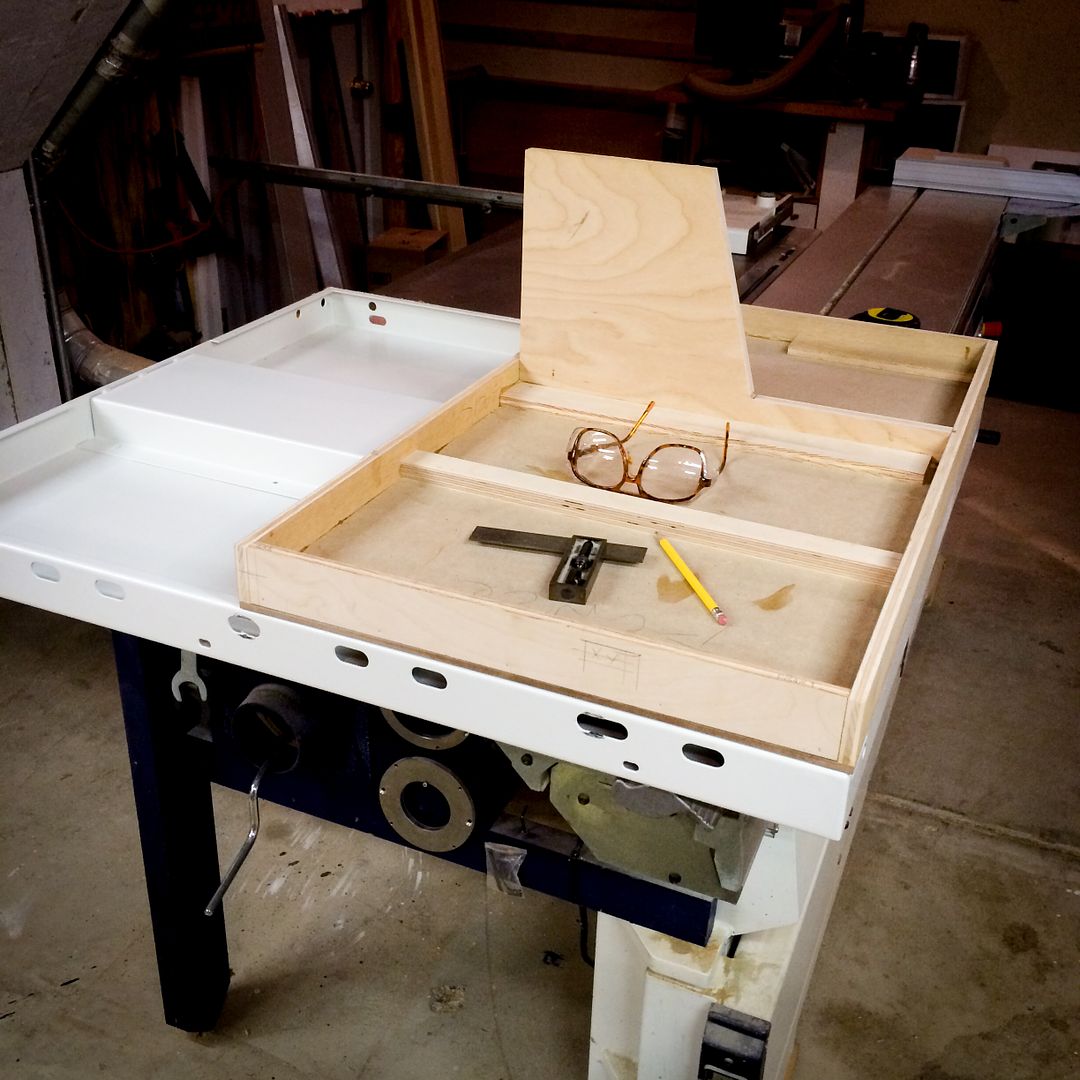
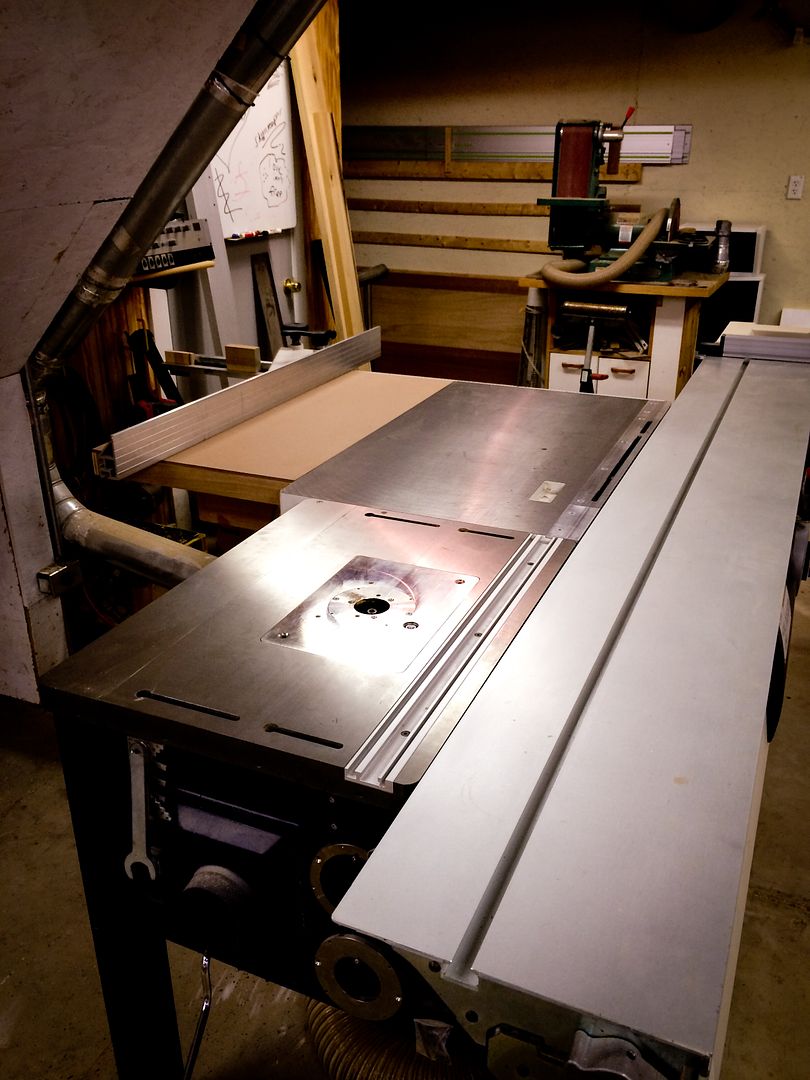
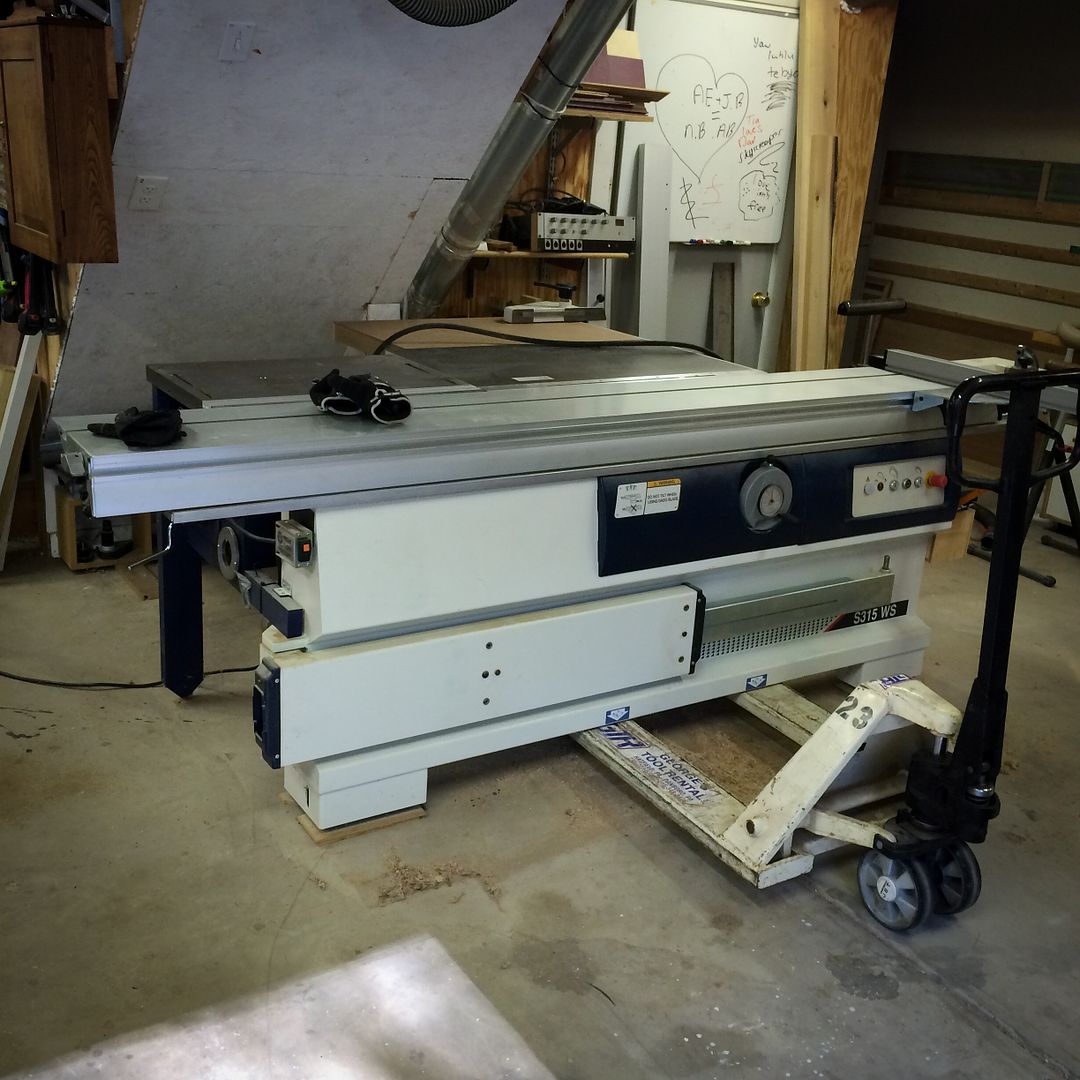
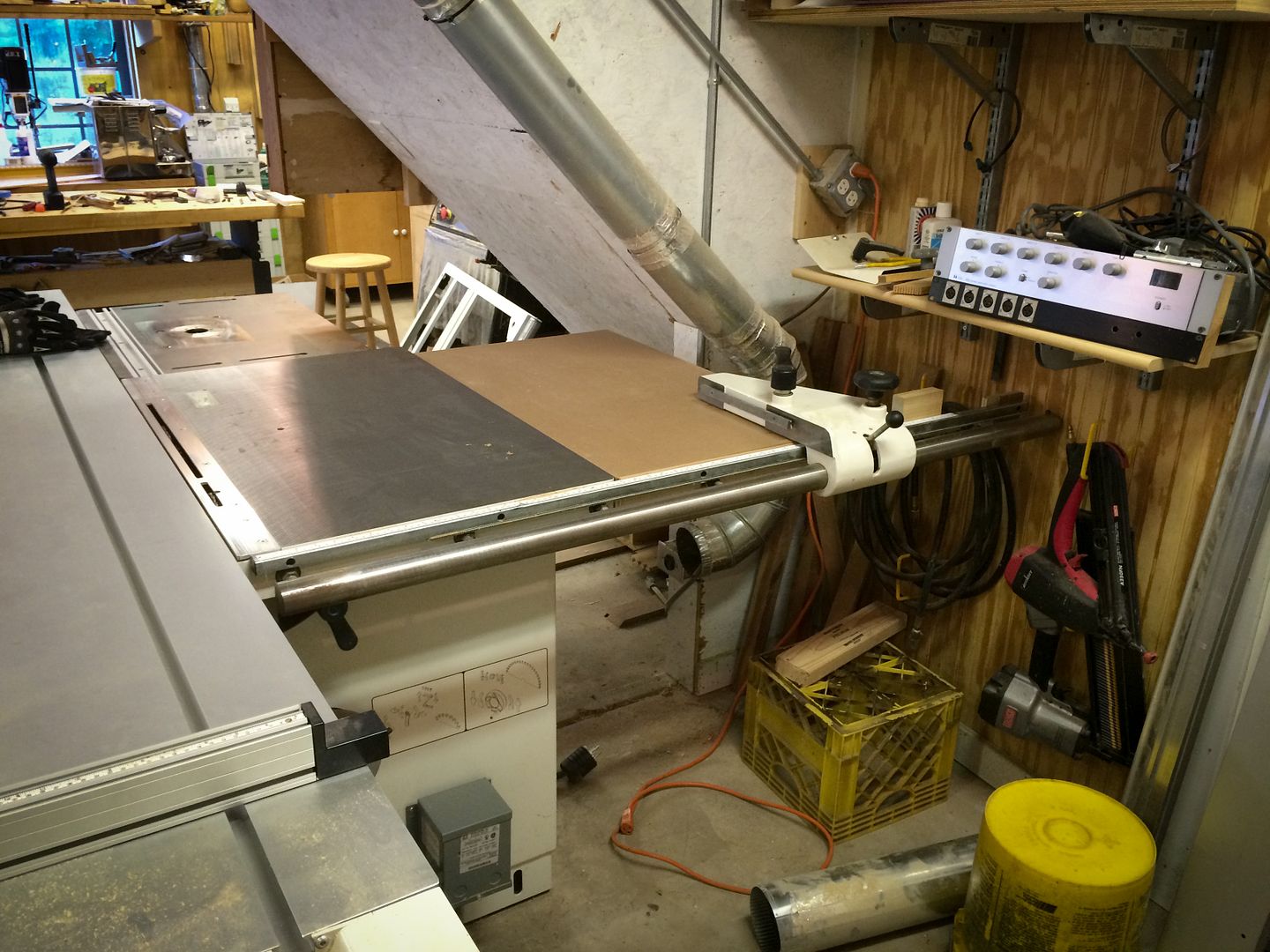
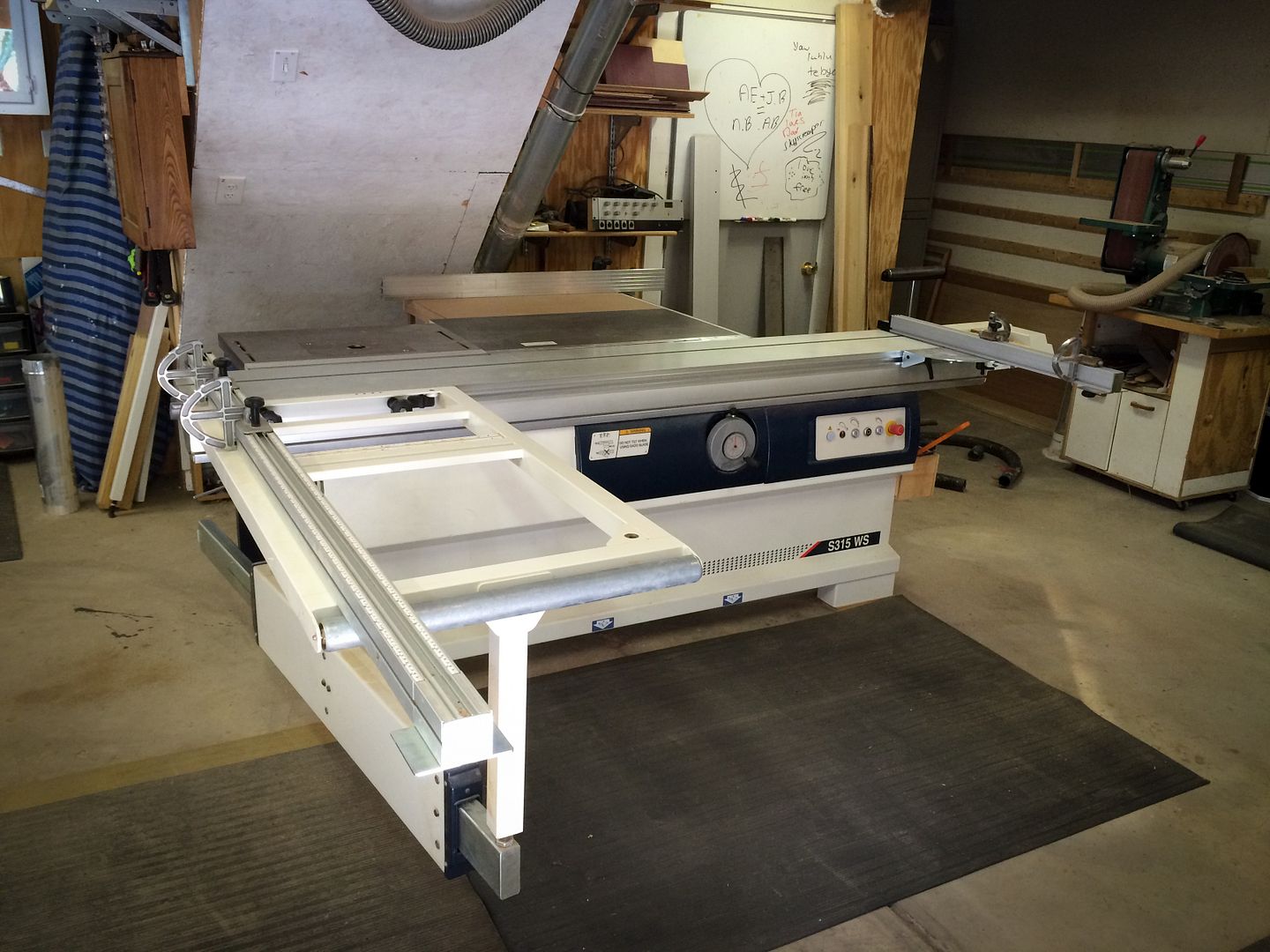
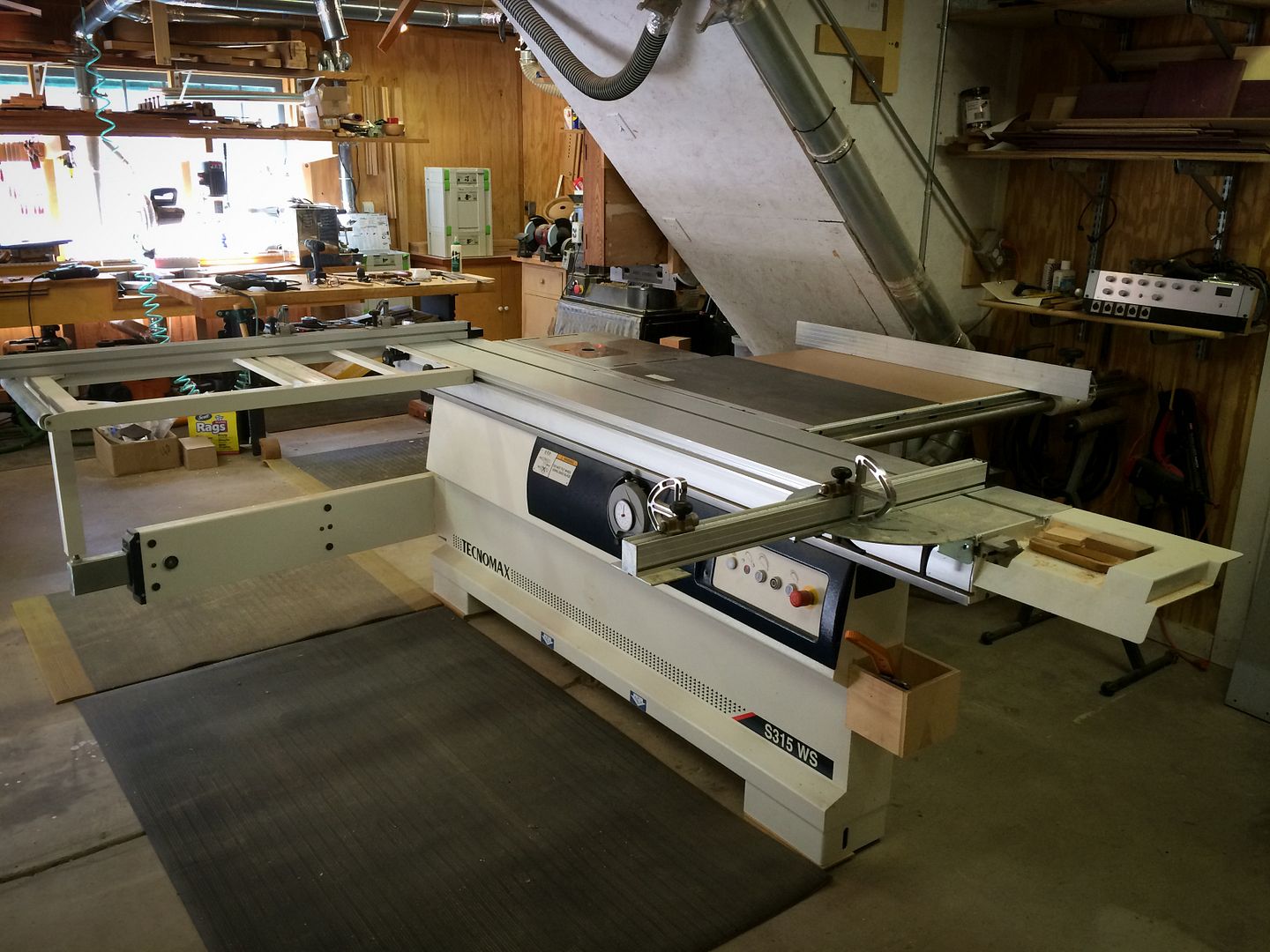

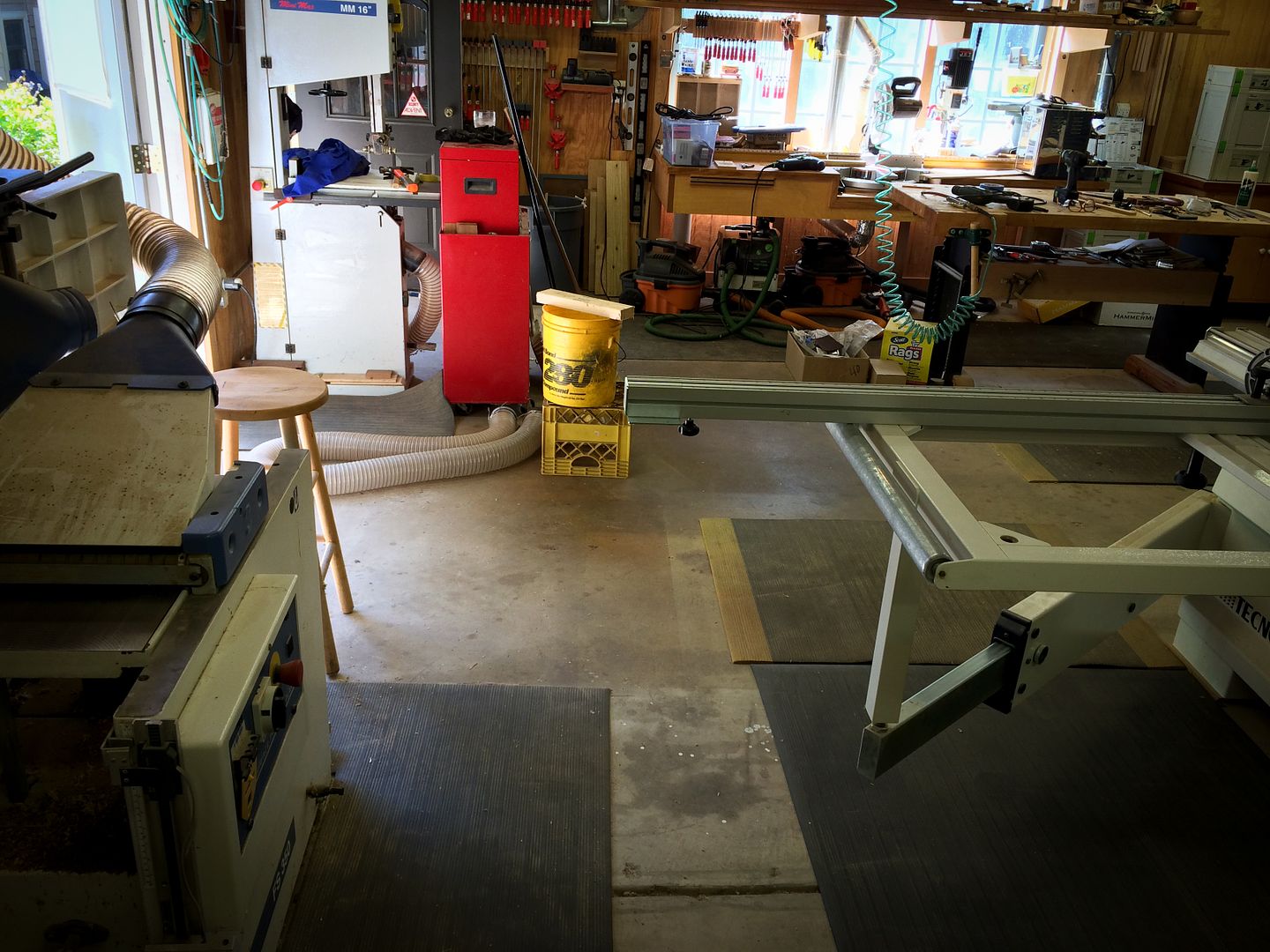
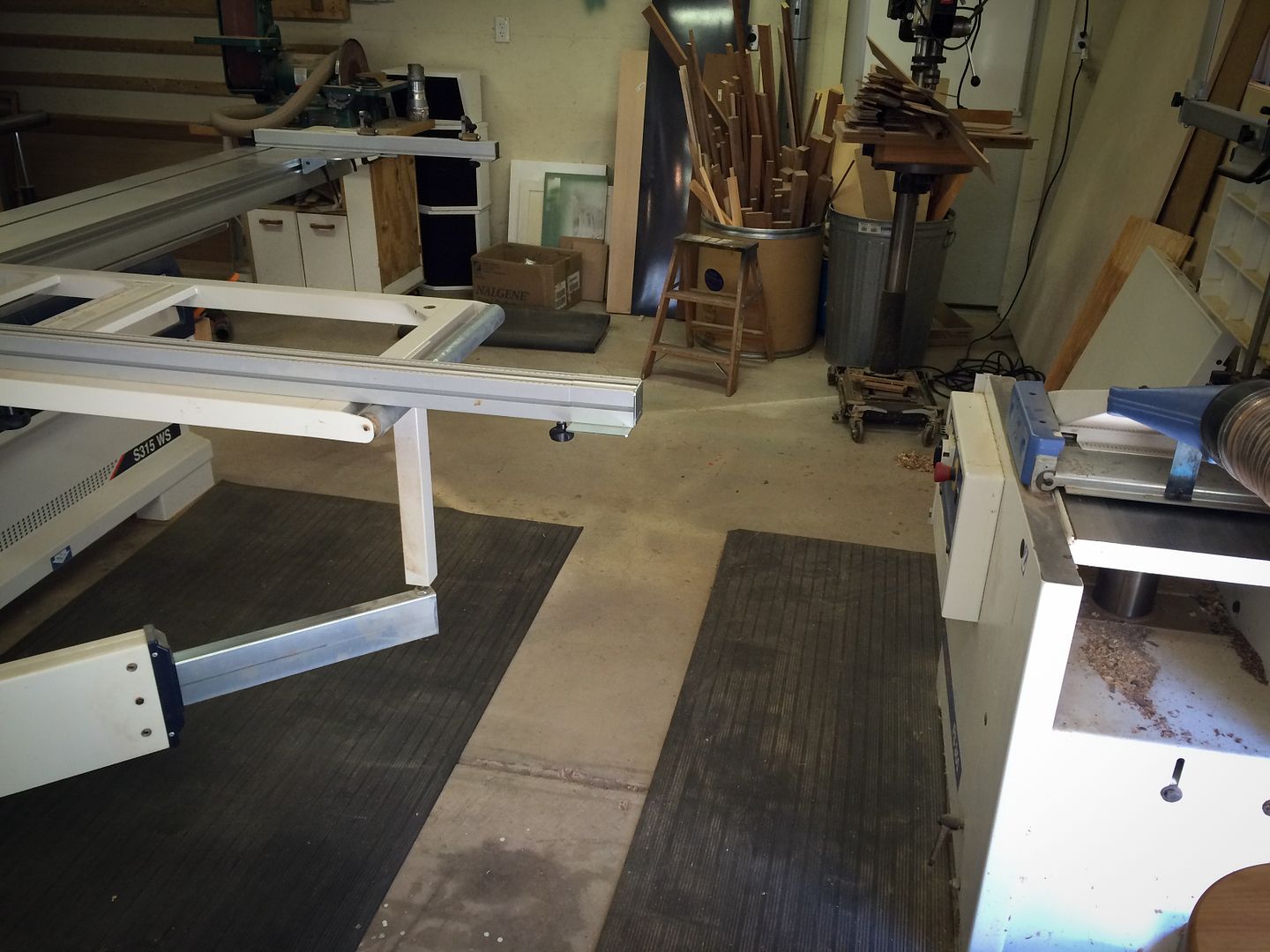

 Reply With Quote
Reply With Quote
